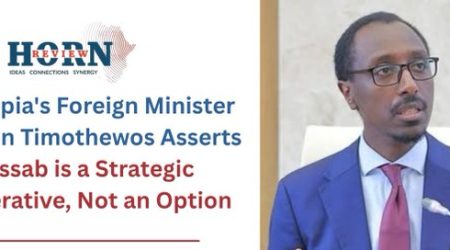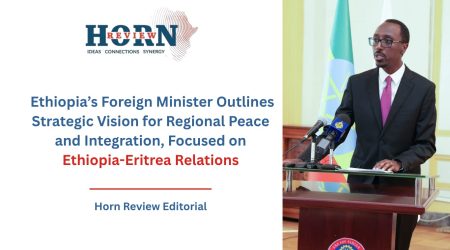
23
Nov
Understanding Ethiopia’s Position: A Nuanced Examination of Domestic and Regional Strategy
Ethiopia’s strategies – domestic, security, and diplomatic – are often interpreted through isolated events or selective narratives, but a closer, integrative analysis reveals a carefully calibrated approach. The country operates at the intersection of historical legacies, complex federal arrangements, and a volatile regional environment in the Horn of Africa, where political, demographic, and environmental variables interact in ways that defy simplistic explanation. Understanding Ethiopia requires appreciating these interdependencies, as well as the strategic logic underpinning policy decisions that are often misread as reactive or aggressive.
At the core of Ethiopia’s posture is a pursuit of stability that is inseparable from development. Its engagement with neighboring states, especially those bordering the Red Sea, reflects not merely economic calculation but also a historically informed strategic foresight. Access to maritime trade routes is not an abstract ambition but a structural necessity: Ethiopia’s economic trajectory – industrialization, export diversification, and connectivity – depends on reliable corridors for trade and investment. Assertions regarding the protection of national interests, while sometimes interpreted as assertive, are embedded in both international law and historical precedent, reflecting an understanding of sovereignty that balances principle with pragmatism.
Domestically, Ethiopia’s federal architecture shapes governance and security in ways that are often underappreciated. Constitutional provisions delineate responsibilities for mobilization, defense, and local security oversight, creating a system where regional administrations act as both implementers and partners in national defense. Allegations by factions such as the Ogaden National Liberation Front (ONLF) regarding forced conscription or military expansion are less about empirical violations than attempts to delegitimize federal authority and disrupt systemic stability. In practice, Ethiopia’s federal system relies on intricate coordination between national and regional structures to maintain institutional integrity, social cohesion, and military readiness – a dynamic interplay that resists oversimplified characterization.
Border tensions and localized disputes are rarely the product of immediate triggers alone; they emerge from deep-seated historical, demographic, and environmental pressures. Federal interventions, far from being mere assertions of authority, are calibrated efforts to mediate disputes, reinforce legal frameworks, and institutionalize conflict resolution mechanisms. Structures such as peace committees, joint security councils, and oversight mechanisms embody a deliberate attempt to stabilize contested spaces while navigating the sensitivities of Ethiopia’s ethnically and regionally diverse federal system. These interventions exemplify a governance philosophy that seeks to prevent escalation through institutionalized negotiation rather than coercive dominance.
Ethiopia’s military posture similarly reflects sophistication rather than aggression. Training rotations, operational preparedness, and readiness protocols are consistent with institutional norms designed to maintain deterrence amid regional volatility. These measures are complemented by sustained diplomatic engagement, signaling an intentional duality: the state maintains credible defense capabilities while simultaneously prioritizing negotiation, regional cooperation, and conflict prevention. Such a balance demonstrates strategic maturity, recognizing that security and diplomacy are mutually reinforcing rather than mutually exclusive.
Equally important are the social and economic dimensions of Ethiopia’s approach, which are systemic rather than incidental. Federal oversight, infrastructure investment, and service delivery continue even in regions affected by insecurity, illustrating the interdependence between governance, stability, and development. The Somali Region provides a vivid case: development initiatives, local administration, and security structures operate as mutually reinforcing elements, demonstrating how federal presence underpins both national cohesion and localized resilience.
Ethiopia’s economic strategies – particularly its pursuit of secure maritime access – cannot be understood apart from security and diplomacy. Policies designed to integrate regional trade networks, foster cooperative partnerships, and stabilize the Horn of Africa corridor reflect a recognition that economic growth, sovereignty, and security are co-constitutive. Growth is deliberately structured to align with legal norms and institutional capacity, ensuring that economic expansion does not outpace governance or inflame regional tensions.
Taken together, Ethiopia’s domestic, security, and regional policies form a coherent, multi-layered strategy that is both deliberate and anticipatory. Far from reactive, the country’s approach demonstrates an understanding of complexity: it simultaneously manages internal federal dynamics, projects influence regionally, and balances the imperatives of development and security. Appreciating Ethiopia’s position requires recognizing this interwoven logic – a state navigating historical grievances, demographic realities, and geopolitical pressures with strategic foresight, institutional depth, and an enduring commitment to stability and sustainable regional engagement.










